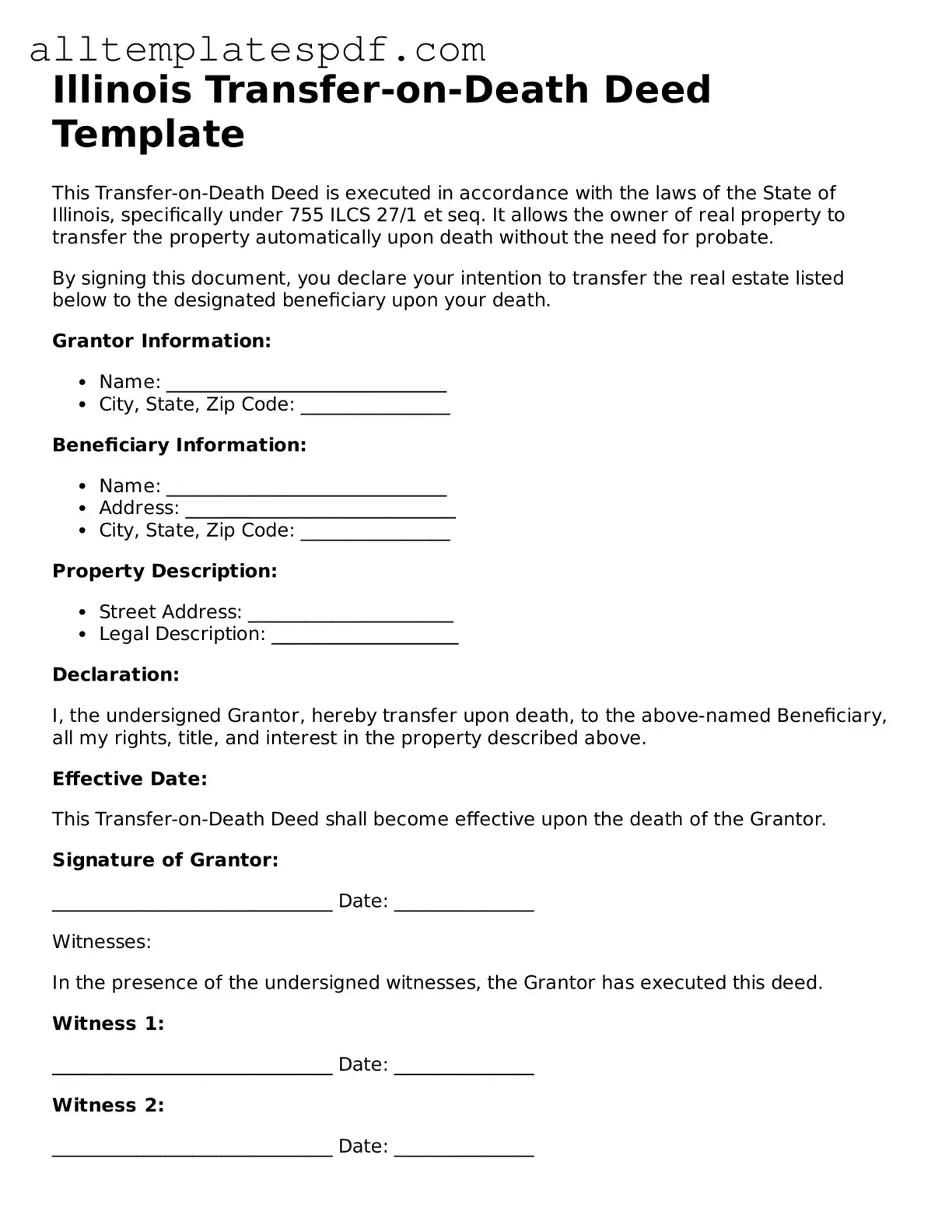When filling out the Illinois Transfer-on-Death Deed form, many individuals make common mistakes that can lead to complications in the transfer of property. One significant error is failing to include the correct legal description of the property. It is crucial to ensure that the property is accurately identified to avoid confusion or disputes later.
Another frequent mistake is not properly identifying the beneficiaries. Individuals often overlook the need to list full names and relationships to the property owner. Incomplete or incorrect beneficiary information can result in delays or even legal challenges when the time comes to transfer the property.
Additionally, some people neglect to sign the deed in front of a notary public. Illinois law requires that the deed be notarized to be valid. Without this crucial step, the transfer may not be legally recognized, leading to potential issues for the beneficiaries.
Many individuals also fail to consider the implications of transferring property upon death. They may not understand how this decision affects their estate or the tax responsibilities of the beneficiaries. It is important to consult with a knowledgeable professional to fully grasp these implications.
Another common oversight is not recording the deed with the appropriate county office. After completing the form, it is essential to file it with the local recorder of deeds. Failing to do so can render the deed ineffective, as it may not be recognized by the court or other parties involved.
Some people mistakenly believe that they can change the beneficiaries at any time without following proper procedures. While it is possible to revoke or amend a Transfer-on-Death Deed, it must be done in accordance with state laws. Ignoring this can lead to confusion regarding the rightful heirs.
Individuals may also overlook the importance of providing a backup beneficiary. In the event that the primary beneficiary predeceases the property owner, having an alternate beneficiary ensures that the property still passes according to the owner’s wishes.
Another mistake is not discussing the transfer with family members. Open communication can prevent misunderstandings and potential conflicts among heirs. It is advisable to inform all relevant parties about the transfer to foster transparency.
Some people may not realize that the Transfer-on-Death Deed only applies to real estate. Attempting to use this form for other types of property, such as personal belongings or bank accounts, will not be valid. Understanding the limitations of this deed is essential.
Lastly, individuals often forget to keep a copy of the completed and recorded deed in a safe place. This document is important for both the property owner and the beneficiaries. Ensuring that it is accessible can help streamline the transfer process when the time comes.
